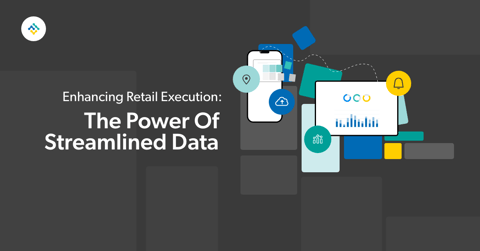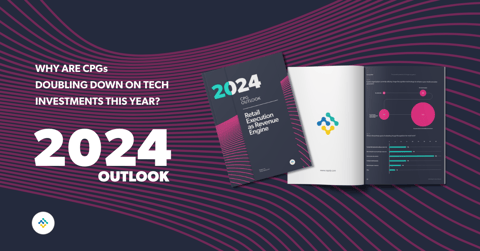A customer walks into their local grocer looking for their favorite kombucha brand, only to find that it’s out of stock. Frustrated, this patron considers her options: choose another brand, choose another store, choose to postpone the purchase, or choose not to buy the drink at all. None of these scenarios are favorable to the beverage producer.
Sales, brand image, and future planning efforts are all damaged as a result of out-of-stocks. Suppliers should do everything in their power to avoid the dreaded stockout by thinking about it proactively, as opposed to reactively.
In This Blog:
Stockout: A Working Definition
Understanding the Scope of Stockouts
Assessing Stockout Cost
What causes an “out of stock” problem?
Preventing Stockouts
Shelf Replenishment
Supply Chain Optimization
Conclusion
Stockout: A Working Definition
Stockout is the term used to describe the phenomenon of when inventory for a particular product is exhausted. The word is interchangeable with out-of-stock (OOS).
Stockouts generally refer to a product being unavailable for purchase at retail, as opposed to elsewhere in the supply chain. They’re most apparent in the fast-moving consumer goods sector.
The opposite of a stockout would be an overstock, in which case there is a surplus of inventory.
Want to calculate exactly how much money you lose on stockouts? Download our free Stockout Cost Calculator!
Understanding The Scope of Stockouts
A stock out situation is problematic to both suppliers and retailers for several reasons. The following table is adapted from a comprehensive study conducted by professors at the University of Colorado and IE Business School Madrid on retail out of stock reduction in the FMCG industry.
|
Negative Effects of OOS
|
|
Suppliers
|
Retailers
|
|
Lowered impact of promotions
|
Decrease in forecasting & ordering accuracy
|
|
Distorted perception of store demand
|
Increased operational costs (providing “rain checks”, unplanned restocking or looking for stock in back room)
|
|
Direct sales loss
|
Decreased store loyalty
|
|
Damaged brand reputation/brand loyalty
|
Increased likelihood for shopping at competitor stores
|
|
Increased likelihood for consumer to try competitor brand
|
Decreased customer satisfaction
|
While these findings are distressing enough on their own, the following statistics on stock out costs reveal how traumatic OOS instances can be for a business.
Data courtesy of ECR Europe & Roland Berger Strategy Consultants
Assessing Stockout Cost
Clearly, the losses associated with out of stocks are substantial. Lean organizations will want to know exactly how a stockout impacts their bottom line. Calculate that figure using this free stockout cost calculator.
What Causes an “Out of Stock” Problem?
There are a number of culprits to blame for a product stockout. Below is a list of preventable causes that lead to a shortage in stock.
- A shortage of working capital resulting from poor cash flow management on the retailer’s part limits the values of monthly orders
- An unseasonal spike in purchasing
- Inaccurate inventory data that results from shipment variances, misplaced products, returns, or stolen goods
- Lack of demand forecasting due to absence of data on stock turn, sell through, historical sales, promotions, seasonality, and the economic climate
- Poor employee training on how to monitor stock levels and perform replenishment
- Inefficient processes for stocking shelves and placing replenishment orders
How to Prevent Stockouts
Thankfully, many of the underlying causes of stockouts can be averted when effective processes are put in place. To minimize stockout risk, suppliers should focus on augmenting their retail execution and supply chain practices. As a general rule of thumb, companies should aim to eliminate OOS for the 20% of items that account for 80% of total sales to make the greatest impact on the bottom line.
Shelf Replenishment
In an extensive report published by Grocery Manufacturers of America, researchers attributed between 70-90% of stockouts to defective shelf replenishment practices. To combat this, merchandisers can equip themselves with mobile software that allows them to collect data on stock levels from multiple retail locations. Reports generated from this data aid in demand forecasting.
In addition to inventory levels, merchandisers should be keeping track of planogram compliance. Products are placed in a specific spot on the store shelf for a reason, and when those placements are meddled with, stock levels can get thrown off.
/iStock-468880794.jpg?width=640&name=iStock-468880794.jpg)
For more sophisticated retail operations, vendors can consider employing a radio frequency identification (RFID) system. Traditionally, this type of technology has been reserved for tags on pallets after they’ve reached the retail location, as the RFID application tracks when the cases are delivered to the store’s backroom and when they move from the backroom to the store floor and vice versa. Some organizations are using RFID at the individual product level to track products through a chip in the item’s packaging.
Supply Chain Optimization
Decreasing out of stock instances requires that each moving part within a supply chain be optimized for maximum efficiency. Suppliers may work with several different parties to get their products from the production facility to the store shelf, including manufacturers, distributors, and retailers.
Here’s some suggestions for how to remedy supply chain problem areas:
- Identify which SKUs are in high demand on a temporary and permanent basis so that manufacturers are not scrambling at the last minute to produce an adequate product volume.
- Adjust delivery cycles to meet demand based on historical inventory data and seasonal fluctuations.
- Find out if distributors have the ability to transport additional freight volumes if necessary. Determine whether or not distributors can handle the impact of several storms in short time frame. If not, make arrangements to temporarily use other distributors who won’t be affected by bad weather.
Conclusion
No customer wants to hear, “Sorry, we are out of stock.” The costs associated with OOS affect more than just sales - brand equity, retailer relationships, and investor confidence all take a hit. By investing in the right tools to enhance retail execution, partnering with optimum manufacturers and distributors, and properly training staff, producers can drastically reduce the negative impact out stockouts.


/iStock-468880794.jpg?width=640&name=iStock-468880794.jpg)


